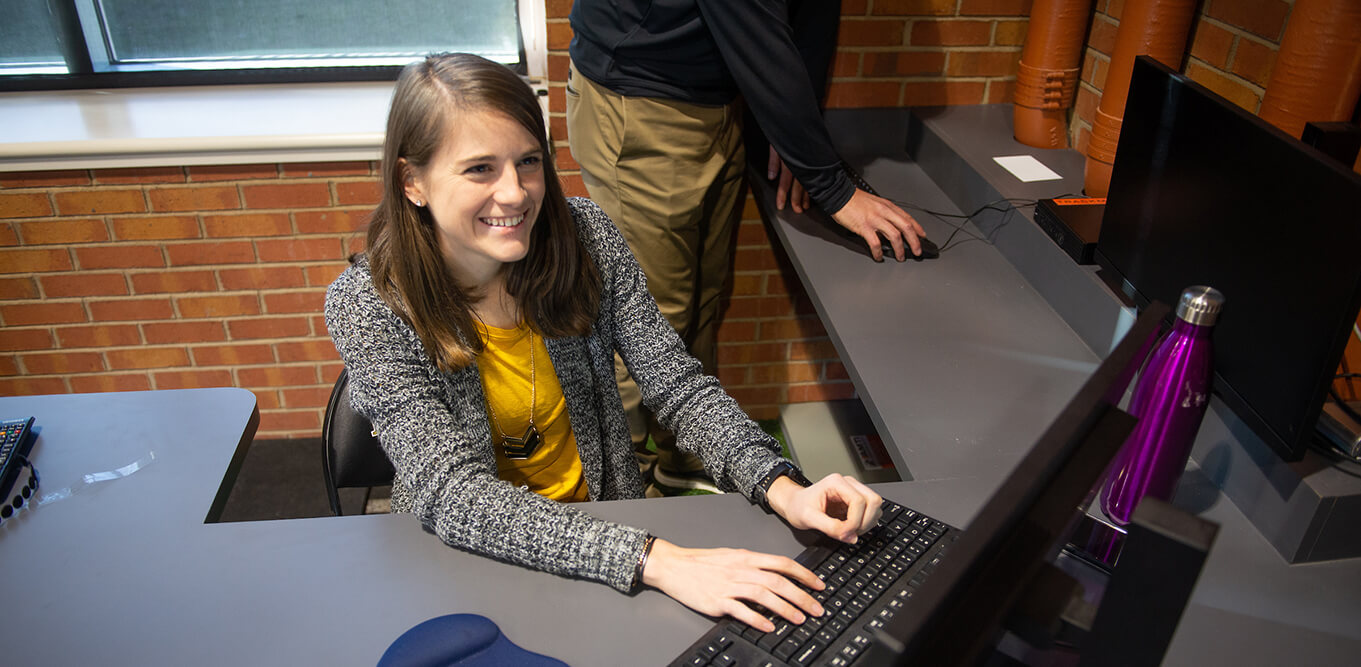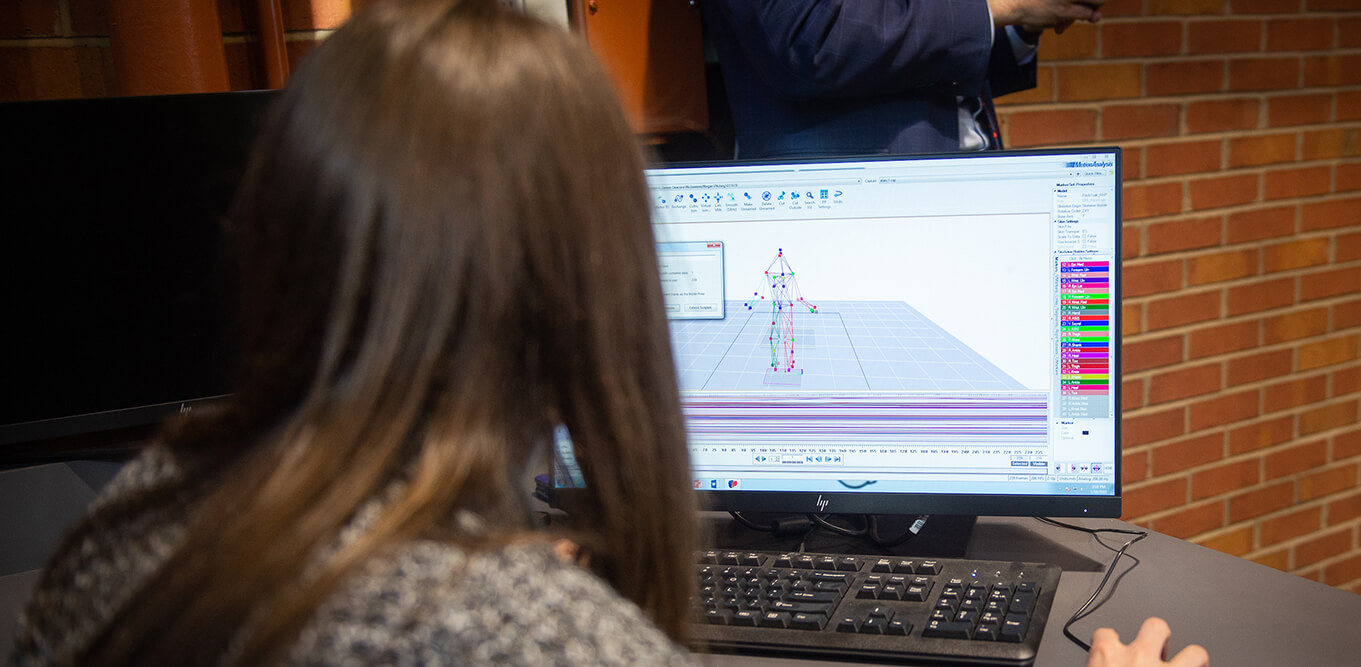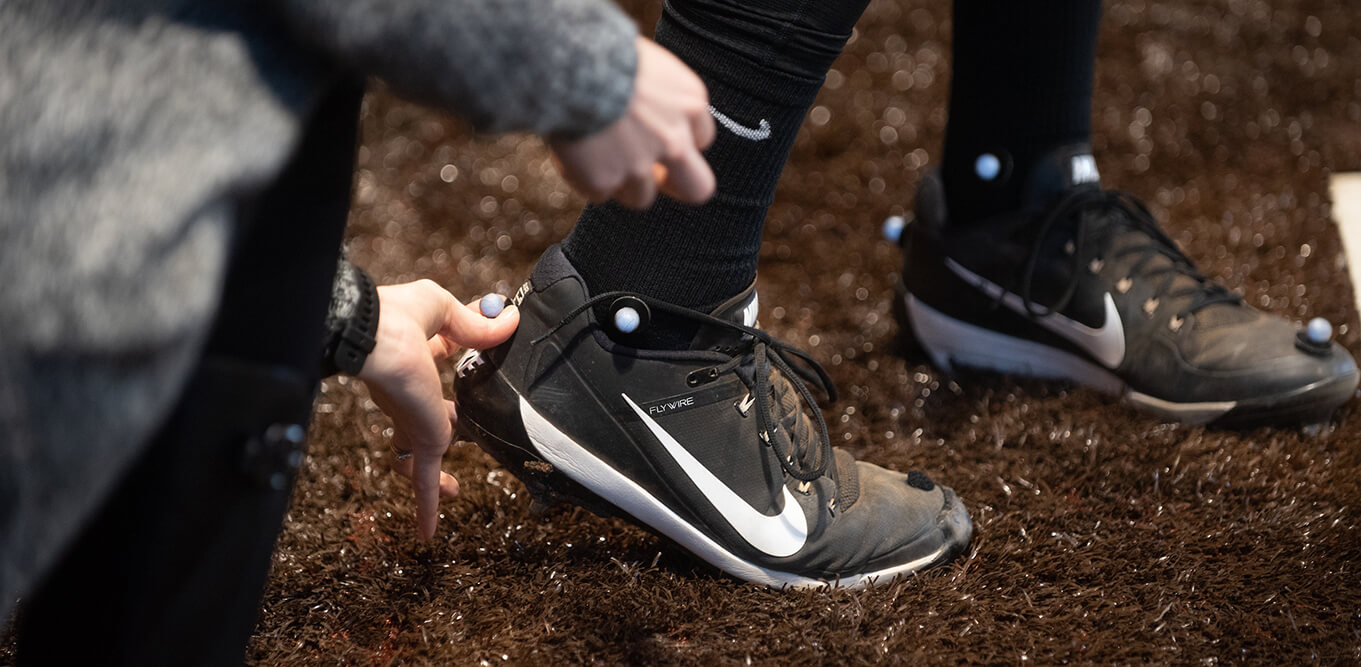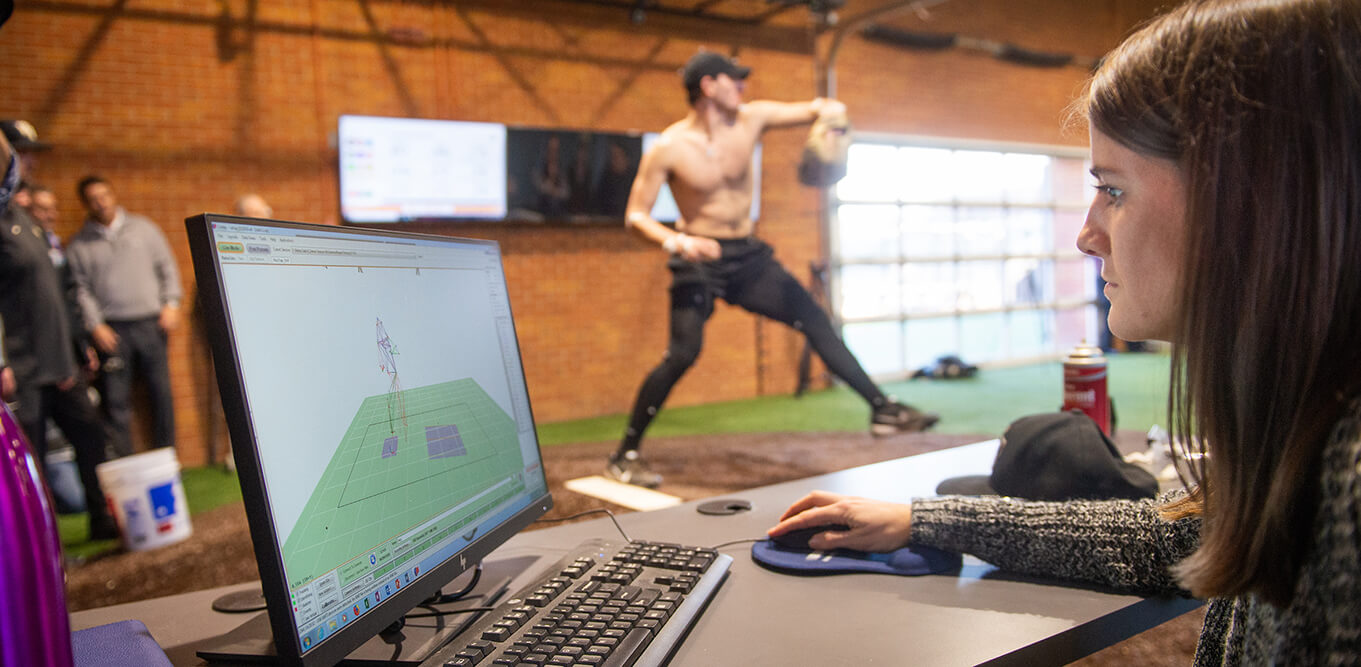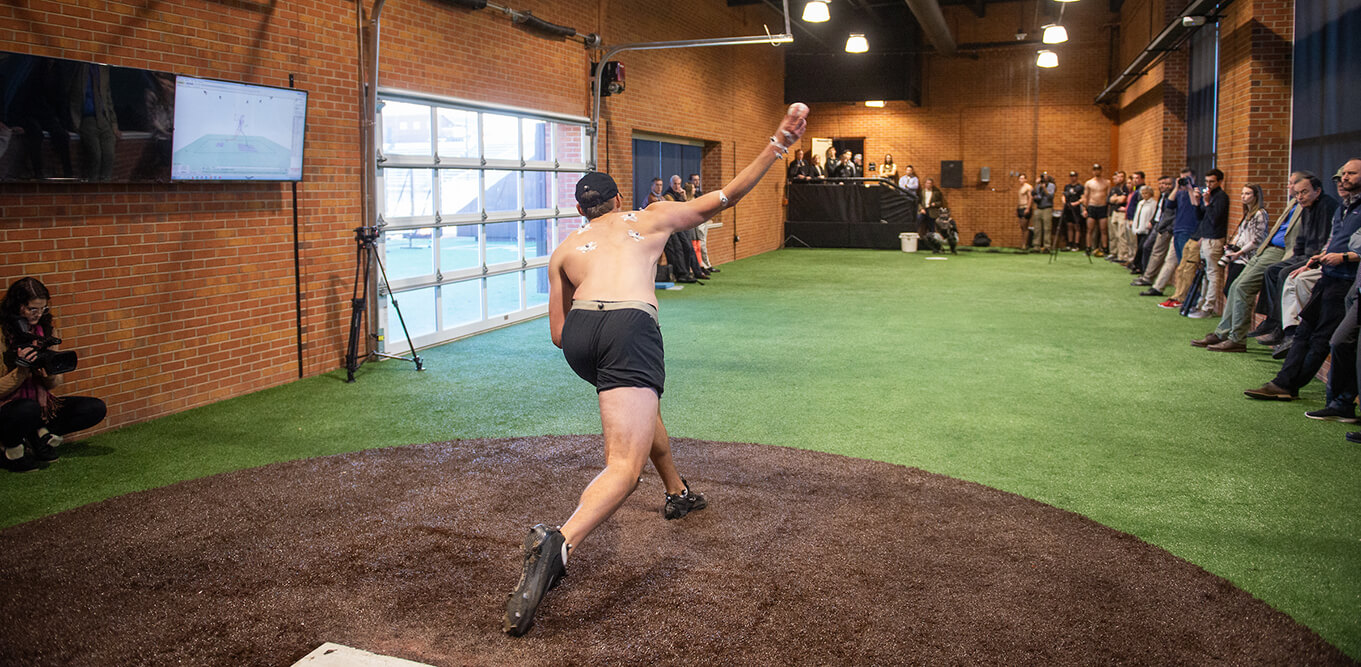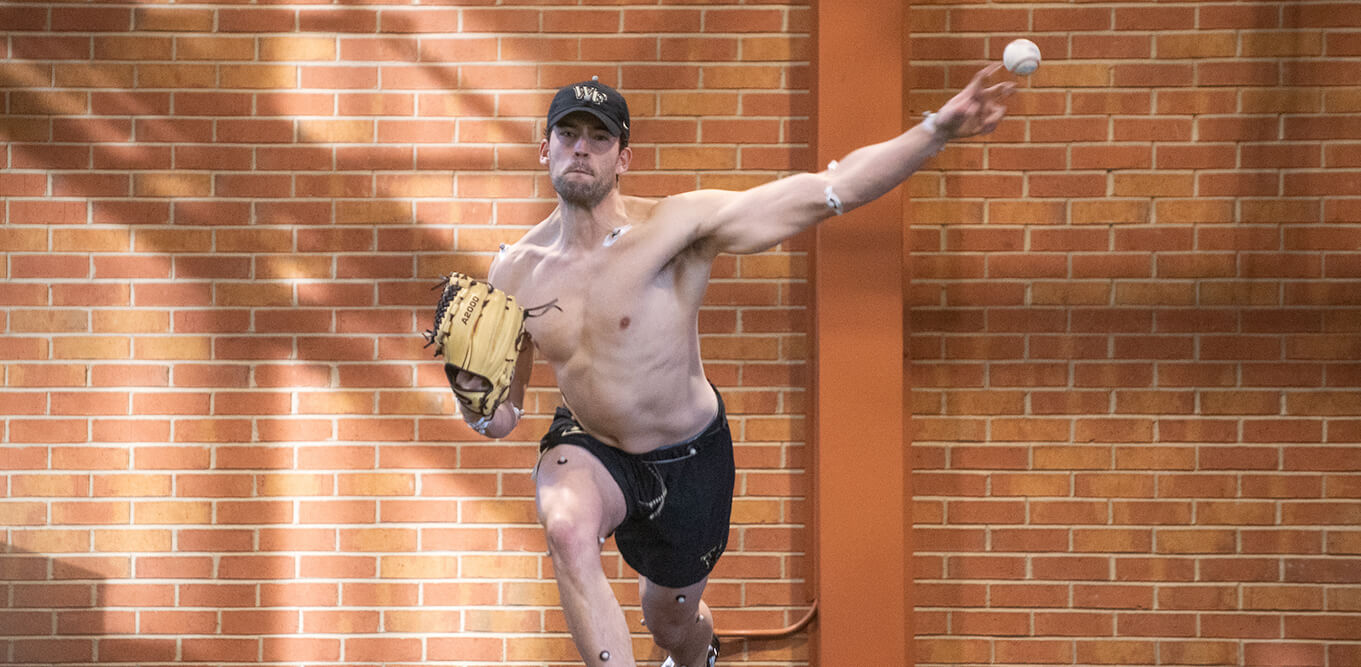The Wake Forest Pitching Lab, a collaboration between Wake Forest University, Wake Forest University School of Medicine and Atrium Health Wake Forest Baptist, is a baseball ace. During the 2023 Major League Baseball draft, Wake Forest baseball was the only team to have four pitchers taken within the top 100 picks. Kristen Nicholson, PhD, MS, director of the Pitching Lab and assistant professor of orthopaedic surgery and rehabilitation at Wake Forest University School of Medicine, is the brains and biomechanics behind the laboratory. 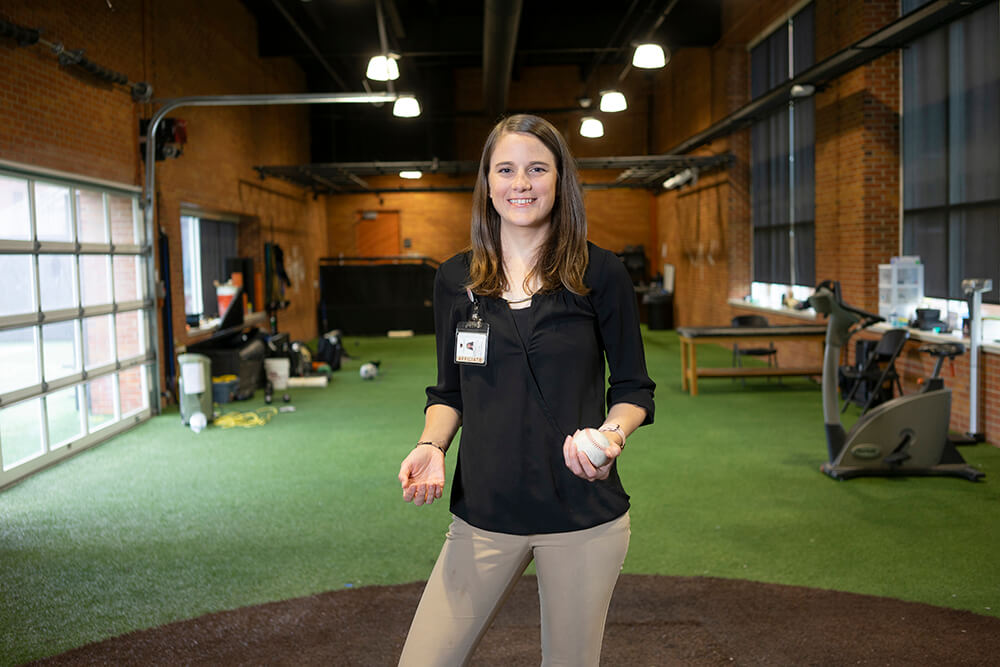
Nicholson oversees data collection, research and biomechanics interpretation – her overall goal is to understand pitching efficiency and the ability to reduce injury risk while maximizing performance. The technology used in the lab is able to analyze a pitcher’s kinematics and kinetics which allows researchers to study how the pitcher moves their body while throwing the baseball and examining the stress each body part is experiencing.
Nicholson and her colleagues have been able to identify several key mechanics that contribute to the kinetics of the elbow and shoulder: a player can adjust these mechanics to become a more efficient pitcher and reduce their injury risk. In the Wake Forest Pitching Lab Nicholson and her team also utilize wearable technology to better understand the stress placed on a player’s elbow during all types of throwing. Get to know her in her own words.
What sparked your interest in biomechanics and motion analysis?
I’ve always loved math and science, learning and being active and involved in sports. As an undergraduate studying math, I was looking for math applications that weren’t just sitting at a computer solving math problems. My junior year I had an internship with NASA and decided that analyzing combustion engine emissions was not for me. I began looking into ways to combine my love of sports and math and discovered the field of biomechanics. I was initially interested in human performance analysis and particularly using motion capture for athletes.
My graduate school advisor told me that we could do sports for fun, but we also needed to focus on clinical biomechanics. So, while I was in graduate school, I studied upper extremity biomechanics with a focus on scapular mechanics in healthy and pathological populations and we also used motion capture on figure skaters and dancers. In graduate school I fell in love with biomechanics and motion capture and enjoy utilizing the technology for the development of non-invasive tools and methods for assessing kinematics and helping athletes and clinical patients achieve their functional goals.
The pitching lab has received national attention over the past two seasons; what has that meant to you?
The national recognition the pitching lab has received over the past two seasons is incredibly humbling. It's deeply rewarding to see the positive outcomes in player and professional development, knowing that our collective goal is to enhance the health and performance of these young men. The science and research emerging from our lab have extended beyond just the Wake Forest baseball players and those who schedule evaluations. Witnessing the tools and discoveries developed in our lab that improve lives and performance across our collegiate and MLB team collaborators and peers is truly gratifying. It’s a testament to the hard work and dedication of everyone involved and I am deeply appreciative of the opportunity to contribute to this impactful work.
Does this research help other athletes outside of the Wake Forest baseball team?
We publish all of our research in peer-reviewed journals in the hopes that we can impact the scientific community and the game of baseball in general. We also offer pitching evaluations to the community. Anyone over the age of 12 is able to visit the Wake Forest Pitching Lab and receive a comprehensive pitching evaluation. This includes a functional movement screen, range of motion measurements, strength assessment, and the 3D biomechanics analysis of pitching. They then receive feedback on all these portions and advice of things they can do to reduce their injury risk and/or increase their performance. Performing these evaluations also helps us build a database of athlete data to use for further research.
The pitching lab offers pioneering technology in sports and keeping athletes safe; where do you hope to take your research next?
We have done a lot of work trying to figure out how to reduce the stress on the elbow and avoid ulnar collateral ligament injuries (UCL) and Tommy John surgeries. We’ve had success in identifying pitching mechanics, range of motion deficits, and strength issues that may put an athlete at increased risk of getting hurt; however, athletes are still getting hurt.
These injuries that occur when there were no red flags in the pitching evaluation tell us that we still don’t have the full picture. Hopefully we can utilize our resources to keep discovering what leads to these injuries and how we can help prevent them through more than just mechanics changes. For example, one of my graduate students is looking into how fatigue plays a role in injury risk. We are looking into a training device designed to strengthen the forearm in hopes of protecting the UCL and improving ball control. We even have a project looking at benefits of using a smaller and/or lighter baseball for young pitchers just learning to pitch. The hope is that our research will continue to impact the game of baseball, making it safer while still helping athletes achieve their athletic goals.







